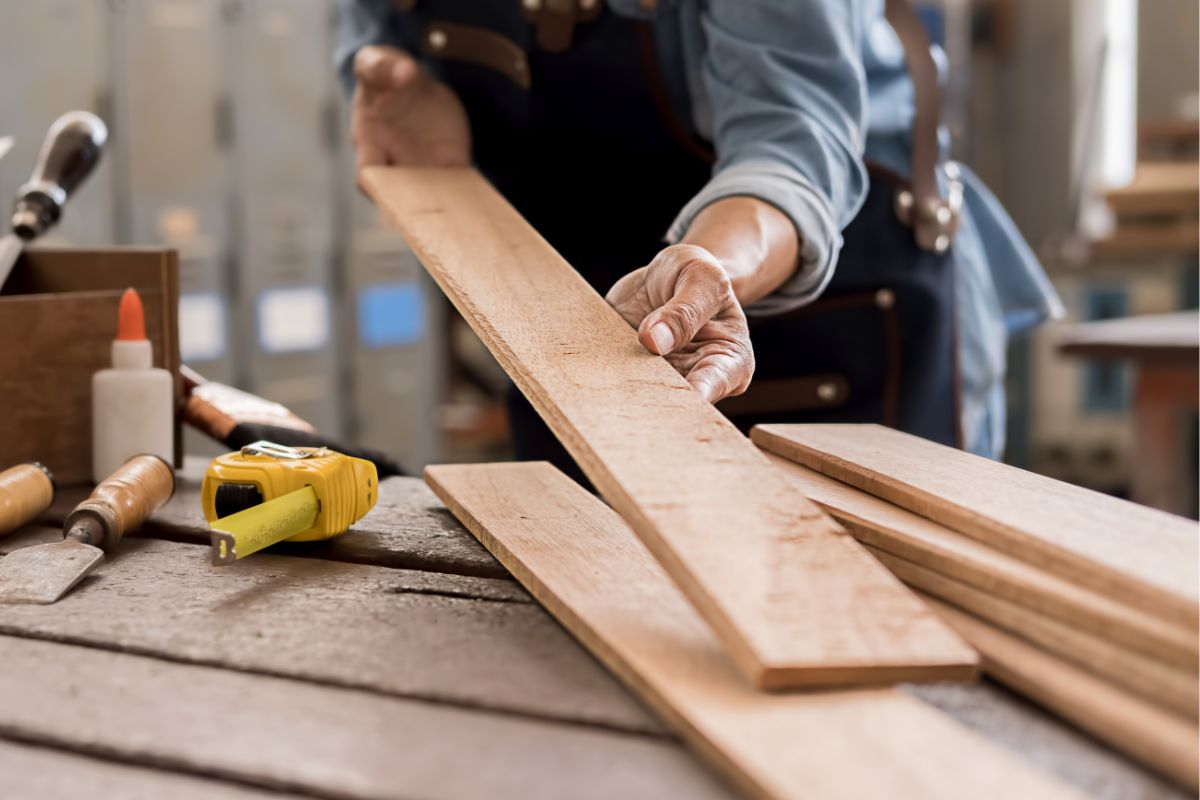Contents
Whether you want to make sure your material is solid wood or you want to know the type of wood, there are a few ways to identify wood.
From checking the color to closely examining the grain, the identification of wood is relatively quick and easy, so you can make sure that your material in hand is definitely wood.
In this article, we’ll show you how to confirm that your material is real wood, and we also give some hints on how you can identify different wood types.
How To Confirm Your Material Is Wood?
When you look closely at your material, there are a few signs that will point at whether it is wood or not.
Here are a few steps on how to check if your material is wood.
Check The Color
The first thing to check with your piece of material is the color. Look closely and check if it is stained or natural.
While this alone isn’t an indicator if your piece is wood, a natural wood color and grain would instantly indicate that this material is wood.
However, there are also stained woods, so next, check whether you can sand some of the varnish off and see the natural color of wood underneath.
If you use some sandpaper to sand down a small area of the material, then you can take the top layer of the color off.
If you can see the raw wood color, then your piece is likely to be some type of wood.
Typically, older wood doesn’t look as nice anymore as the new version as it develops a dull gray color. It takes on a patina after a while.
Depending on your type of wood, wood can turn redder, lighter, darker or even lose its color entirely.
Saying this, as a rule of thumb, most popular wood types for construction turn a darker color, so check if your material has aged over time and changed color.
This is a sign that it is solid wood.
Check The Grain
If you can see the grain of the material through the stain or it is unfinished, then you need to check the texture of the grain first.
If the grain doesn’t have any indentations, then it is like softwood.
In comparison, if your material has an open pore structure with a rough texture, then this is a sign that it’s a hardwood, such as mahogany or oak.
Saying this, there are also some hardwoods that have a smooth texture, so make sure that you also check for other wood identification signs.
When you observe the wood grain closely, you will be able to tell that the piece has been cut directly from the tree.
Certain wood species also have distinct textures and grains, such as the curly figures in soft maple.
Check The Weight Of The Wood

Many modern materials that imitate wood are much lighter than solid hardwood and this is often used to identify wood.
When you check the weight of your material and measure the width, thickness, and length of the piece, then you can calculate the density of the wood.
This is important to find out because solid wood is much more dense than wood imitations or wood alternatives.
However, bear in mind that the moisture content of the piece also plays a key role in the weight of the wood.
Dry wood doesn’t contain as much moisture, so it will be lighter than wood that’s wet.
It’s also good to bear in mind that different wood species have different weights.
You can use other wood species to compare your material and get a rough estimate of where your wood sits when it comes to weight.
Another factor to keep in mind when identifying wood is hardness. Wood that is quite heavy is usually also hard.
You’ll be able to tell the hardness of wood by the way it has been used previously.
For example, when your wood was a piece of furniture, then it is usually hardwood.
Find Out The Wood’s History
Sometimes the history of your material piece can already tell you a lot, including whether it is wood or not.
If your material was used as a piece of furniture, then it is likely a certain type of wood. You should also consider where it came from.
If you know that your material came from a lumberyard, carpenter, boat builder or a wood pile, then there are few doubts that this is wood.
Finding out more about the material’s age can also help you identify the wood.
Older wood is usually covered with a natural patina which shows that the material is wood.
Plus, the patina can also give you a rough indication of the type of wood.
Depending on where the wood came from and how old it is, you can place it in a historic context as certain woods were used in the past in certain parts of the world.
Check The Odor
This might not be everyone’s favorite wood test but getting close to your material and checking its scent can tell you a lot about whether it is wood or not.
Freshly cut wood has a distinct smell, and some types of wood also have a certain smell that can tell you more about the material.
For example, rosewood has its name thanks to the characteristic scent of roses.
If you are familiar with the smell of certain wood types, then checking the odor is a great way to identify wood.
Try Chemical Testing
If you have tried all methods mentioned above but you are still not sure if your material is real wood, then there are also some chemical tests that you can use.
These tests are relatively inexpensive but they don’t work for every wood species, so make sure that you get the right test.
Final Thoughts
There are so many different ways to identify wood and the different wood types.
It’s important to bear in mind that you should use a number of wood testing options to clearly identify whether your material is wood.







